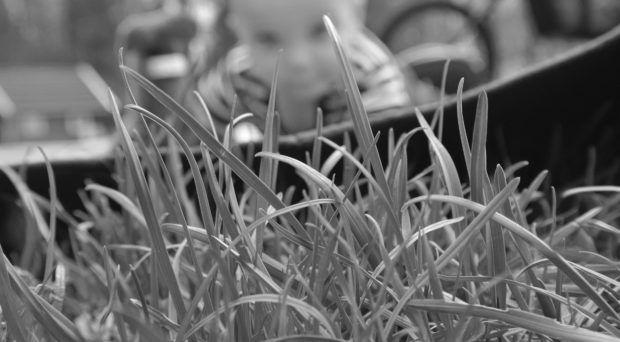
Jakob von Uexküll´s theory of meaning
In his introduction to Theory of Meaning (1940, published in English in Semiotica 1982), the German-Baltic biologist Jakob von Uexküll (1864–1944) refers to a prominent biologist who had criticized his Umwelt theory – a biological theory about the experiential worlds of animals – for being misleading in its depiction of an orderly arrangement of nature.
[This biologist] perceives nature´s countenance like a chemist confronting the Sistine Madonna. Although he can see the colors, he cannot see the picture. The chemist can certainly learn much by chemically analyzing the colors, but such an analysis is irrelevant to the painting.
As we see here, Uexküll compares his critic´s «meaning-blindness» to color-blindness. The subjective biology that Uexküll called for takes the perspective of the living being that is the subject of biological study. In order to understand for instance an animal, he reasoned, we must understand what carries meaning in its subjective, experiential world, its Umwelt.
The study of meaning in nature
Biosemiotics is the approach within today´s biology that most systematically advances Uexküll´s point of view. The main idea of biosemiotics, as stated by its founding scholar Thomas A. Sebeok (1920–2001), is that life and semiosis are coextensive. Semiosis is sign exchange, exchange of signs – where “a sign” somehow stands for something else than itself.
Signs carry meaning. And life carries certain mind-like properties that enable meaningful interpretation of perceived signs. This outlook contrasts with the traditional dualistic approach in science that distinguishes sharply between mind and matter. Biosemiotics explores the gradual emergence of various qualities, including broad phenomena such as life and mind.
Biosemiotics explores the gradual emergence of various qualities, including broad phenomena such as life and mind.
The mind-like properties found elsewhere in nature can be very different from the human mind. Biosemiotics does not promote anthropomorphism – attribution of human traits to non-humans. Instead, it acknowledges the diversity of semiosis across and within the various levels of biological organization, from the cell via individuals to ecosystems.
Challenges
Sign processes are easily recognized in animals that communicate and learn, but it is more difficult to find similar processes in organisms without nerves and brains. Molecular biologists are used to talk about information transfer. While the animal itself interprets signs appearing in its perception, it is harder to say what it is in cells that interprets information.
The semiotic enterprise’s expansion to the entire tree of life is an enormous challenge. We have to admit that semiosis in simple bacteria is qualitatively different from the semiosis in advanced eukaryotic cells, and even more radically different from the brain-based semiosis of animals.
Semiosis evolved with life, and both gradually increased their complexity and organization. This process of evolution is not merely a quantitative affair, but a process paved with important qualitative inventions that at some points in time restructured both the nature of life and the character of signs.
Biosemiotic ideas about development and evolution
Uexküll was the first to propose that objects in the environment have specific meanings for different organisms. A key feature of biosemiotics is that it considers the workings of semiosis at multiple time scales, and emphasizes the active role organisms have in reshaping sign relations.
The healthy development – growing up, coming-to-be – of an organism presupposes that it is surrounded by an environment that is rich in terms of signs and meets its requirements. Only in a rich and suitable environment can an organism act by selecting what is meaningful to it, attribute meanings to environmental objects and develop its subjective world, its Umwelt.
The healthy development – growing up, coming-to-be – of an organism presupposes that it is surrounded by an environment that is rich in terms of signs and meets its requirements.
This holds true whether we are talking about human child development (where required elements include social caretakers and eventually companions) or the development of organisms in general.
Organisms are active in shaping their own lives. The active role of organisms has crucial implications for our understanding of ecological and evolutionary processes. By altering sign relations, organisms influence what they recognize and how they respond to it. Organisms also change sign relations in other species. In the big picture, we all affect each other.
Biosemiotics offers a new platform for explaining biological evolution. It says that evolution is semiosis, a process of continuous interpretation and re-interpretation of hereditary signs alongside other signs that originate in the environment or the body.
This blog post includes text drawn from three editorials published in Biosemiotics, all written by Alexei Sharov, Timo Maran and Morten Tønnessen: Towards Synthesis of Biology and Semiotics (2015), Organisms Reshape Sign Relations (2015) and Comprehending the Semiosis of Evolution (2016).
The journal Biosemiotics is the official periodical of the International Society for Biosemiotic Studies (ISBS), a society that organizes an annual International Gathering in Biosemiotics.
Morten Tønnessen
Latest posts by Morten Tønnessen (see all)
- Biosemiotics: Making sense of nature - 15th September 2016